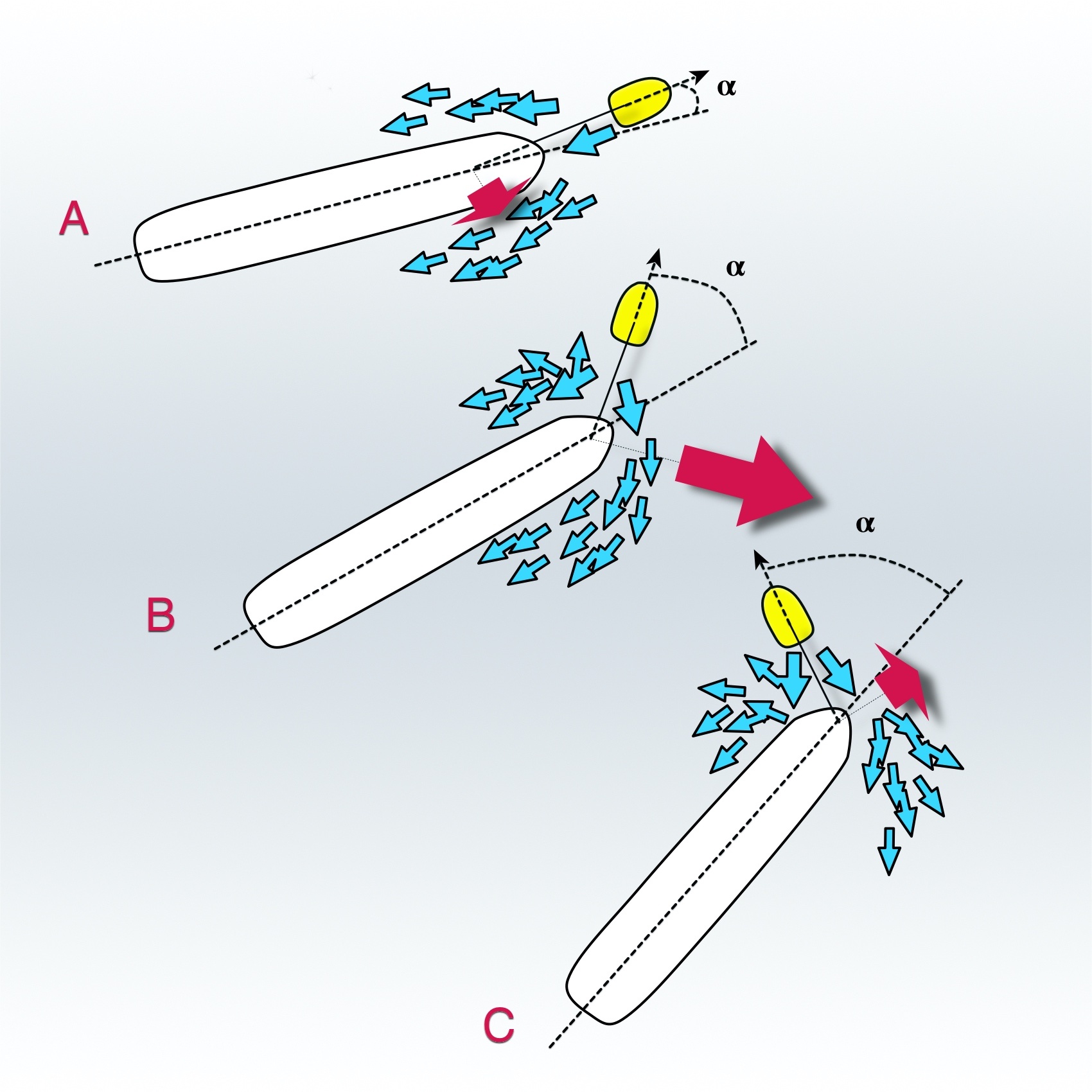Tug Wash Effect – Coanda
The ship and tugboat wake, made up of a mass of moving water pushed by thousands of horsepower, affects the surrounding environment. We must consider these interactions during a Port manoeuvre.
When a ship is pushed to the quay by one or more tugs, the effect of their wakes can make it difficult – and potentially dangerous – to control the steering for ships passing by. The simplest solution is to suspend the traffic in the affected area or decrease the thrust of the tugs to allow safe passage to the vessel in transit.
The effect of the wake also occurs when the tug is working, pulling with its line. The propeller wash hitting the ship’s hull creates a reaction force that reduces the pulling effect of the tugboat.
The less UKC we have, the more force the tug has to apply and the greater the wake effect is. So slacking the towline is enough to avoid or eliminate any interaction, even if it is not always possible. However, being aware of this behaviour can help us exploit pressure variations to our advantage or decide on possible countermeasures.
For example, the ship’s wake can get wedged between the ship’s hull and the quay, or other obstructions, creating a water cushion that we can conveniently use to facilitate a manoeuvre.
To summarize, the factors that contribute to amplifying the wake effect are:
- Small UKC of the assisted vessel
- Hull shape of the assisted vessel
- Confined Area
- Towline length
But it is not all. The tug’s wake act on the ship’s hull at different angles depending on how the tugboat moves, creating different pressure zones. At a certain angle, the reaction force opposite to the pulling force made by the tug became so significant to be challenging to compensate for it. The only affecting energy left is a low pressure that attracts the vessel forward and is opposite to what is expected.
As we have already explained on several occasions, the Coanda effect is nothing more than the tendency of a liquid, pushed with a continuous force, to follow the surface contour on which it flows.
Due to friction, the part of the liquid in contact with the shell surface slows down. In contrast, the outer part accelerates, generating a reduction in pressure, which becomes an attraction force.
Be aware of the Coanda effect. In many cases, once the vessel does not behave as expected, the tugs are requested to increase their power. Increasing thrust worsens the situation because all three forces grow equally, so the Canda effect does.

A classic and practical example to explain the physical phenomenon is that of the spoon:
Let’s take a standard kitchen spoon and bring it closer to the water jet from the tap. You will notice that the water will follow the spoon’s surface until it invades the concave side. Then, holding the spoon with two fingers so that it is free to swing, you will feel the attraction of the spoon towards the jet.
If you haven’t already, you can try now. It will remain with you forever.
